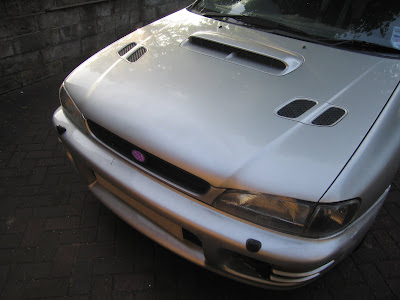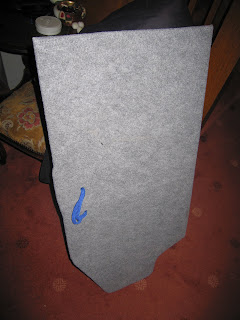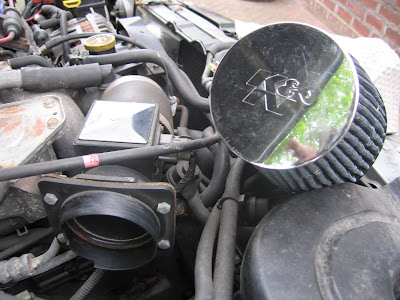The current MOT runs until the 22nd of June, but after being told by the dudes in National Tyres the other week that my rear-shocks were kaput, I decided to get the car in as soon as possible and find out what the damage really is.
The last MOT was done at Seaview Motors in Liscard, Wirral and as Village Motors in Wallasy [where I stupidly kept taking my BMW] are the most knit-picking test-centre in the world, I thought it couldnt hurt to give Seaview a try if they know the car.
The test cost £45 quid, which is a whole £20 more expensive than Village Motors, but if I'd taken the car there I then it would be for sale right now...
Here's a scan of the test-sheet itself. Im amazed it didn't fail on anything more serious!
What I'm most surprised at is that the brakes came home A-ok - the discs at the back are pretty worn! The bane of my life with the BMW was rubber-bushes all over the place - only pennies to buy, but an absolute bastard to fit. Subaru obviously know this then and fit superb ones to their chariots! [unless I was just right to trust Seaview garage to be lenient... ;)]
Ok so a few things on there, but it's not the end of the world. here are my intentions:
1. Headlamp - It's off a MY94 Scoob so it doesn't fit the grille right and this pushes it down to aim for the floor. I had to cut a slice out of the grille to fit it this far... so more will have to go if need be to tilt it up.
2. Number Plate Lights - Pennies to replace the bulb and a bit of glue to stick it back in place - done.
3. Rear Foglamp - Someone hasn't fitted the twin light clusters at the rear properly, leaving off the wires to the fog and reverse lights. Should be an easy fix when I find the wiring diagrams.
4. ABS Warning Light - This is a tricky one. There are 65 pages in my workshop-manual devoted to diagnosing problems with the ABS light. I'll be checking all the basic components with a circuit-tester and the mechs at work can run a diagnostic machine on her, but the tiny brake-sensors are very hard to replace, so if thats the case I might just cut the wire to the warning light.
5. Steering-Rack Gaiter - A rubber sleeve that holds grease round the steering-rack has split. £10-20 for a new one and its a doddle to fit, provided nothing has seized.
6. N/S Rear Shock - Was well chuffed when only one of the shocks failed after the National guys said both were wrecked - best to replace both though anyway! A replacement OEM pair [Kayaba Racing] is a snip @ £115 for the pair from
camskill.co.uk. What I really want though is a full set of coil-overs for the car - and it has to be Japanese. I fancy a set of the TEIN Super Sport kits, usually costing a grand, which are going for £650 on eBay - I could just afford to take this giant leap so fingers crossed.
* 7. Emissions and Noise - The exhaust is the only bit that baffles me [no pun intended!]. I can fit a bung to make it quiet, but emissions is a different story. I'd suspected the CAT had been removed and wasn't surprised to hear it would need to be put back on for the MOT. I can slap on a brand new budget unit [down-pipe, CAT, front-pipe] for £120 from a great site called
Cats-Direct so no worries there, but now the problems begin. Will the OEM front-pipe fit onto the 3" custom centre-section? It can be adapted to fit as long as its the right length to meet the join but, even with the CAT on, the custom straight-thru centre-pipe and back-box might still fail the emissions test.
So will I have to splash out on a full standard exhaust-system? Guaranteed pass and my fuel economy will certainly improve no end! The car would also be peppier at low revs and the engine idle more nicely and generally be more sedate. Lets not forget that I'll be dropping about 20bhp though! And what can I do with my beautiful 3" s/s turbo-back system? Bin it?
Decisions, decisions... I've been preparing to spend some money for the MOT for a while now so lets wait and see.















































